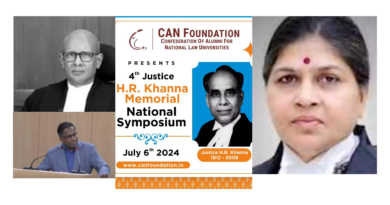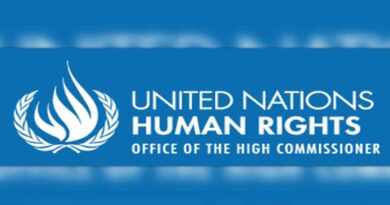Marginalized Sections of The Society Would Bear the Brunt of This Digital Divide: Supreme Court on CoWIN Portal
(Judicial Quest News Network)
The Apex Court of India has stated that the COVID-19 vaccination policy which mainly relies upon a digital portal (CoWIN portal) for vaccinating a significant population of the nation between the ages of 18-44 years, would be unable to meet its target of universal immunization owing to such a digital divide. It is the marginalized sections of the society who would bear the brunt of this accessibility barrier.
A Bench of Justices DY Chandrachud,LNageshwarar Rao and Ravindra Bhatt, in its judgement in the Suo MotoCase of COVID-19 issues have expressed these observations.
“There exists a digital divide in India, particularly between the rural and Urban areas,”
A vaccination policy exclusively relying on a digital portal for vaccinating a significant population of this country between the ages of 18-44 years would be unable to meet its target of universal immunization owing to such a digital divide. It is the marginalized sections of the society who would bear the brunt of this accessibility barrier. This could have serious implications on the fundamental right to equality and the right to health of persons within the above age group.
The Court has also shown its concern over the non-accessibility of the portal to persons with visual disabilities and that the accessibility barriers should be addressed.
In this regard the Court refers to the Survey on „Household Social Consumption: Education‟ was conducted by National Statistics Office (July 2017-June 2018)28 which revealed the following:
- Around 4% of the rural households and 23% of the urban households possessed a computer. In the age group of 15-29 years, around 24% in rural households and 56% in urban areas were able to operate a computer; and
- (ii) Nearly 24% of the households in the country had internet access during the survey year 2017-18. The proportion was 15% in rural households and 42% in urban households. Around 35% of persons in the age group of 15-29 years reported use of internet during the 30 days prior to the date of survey. The proportions were 25% in rural areas and 58% in urban areas.
The top Court noted that the digital divide could have serious implications on the fundamental right to equality and the right to health of persons within the age group.
The Court therefore directed the Central government to clarify whether it is feasible to require the majority of our population to rely on friends/NGOs for digital registrations over CoWIN, when even the digitally literate are finding it hard to procure vaccination slot.
Digital Divide
In our order dated 30 April 2021, we had highlighted the concerns relating to the ability of the marginalized members of society to avail of vaccination, exclusively through a digital portal in the face of a digital divide. The UoI‟s affidavit made the following submissions in relation to the accessibility of the CoWIN portal:
(i) The CoWIN portal enables one person to register 4 persons using the same mobile number;
(ii) All gram panchayats in the country have Common Service Centres27 which can effectively enable people residing in rural areas to register online for the vaccination;
(iii) Citizens who do not have access to digital resources could take help from family, friends, NGOs and CSCs;
(iv) Walk-ins cannot be permitted due to the scarcity of vaccines and fears of over-crowding at centres. The online registration requirement counters this fear and also effectively monitors the administration of the second dose. The policy may be re-considered subsequently when more vaccines are available;
(v) Identity proofs are required for the purpose of determining age and keeping a track of persons who are due for the second dose. However, in recognizing the issues arising with the insistence of one of the seven prescribed photo-ID proofs, the Central Government issued an SoP dated 23 April 2021 which enables bulk registration of certain identifiable groups, such as homeless persons, who would be identified and registered by the District Immunization Task Force; and
(vi) It is clarified that walk-in vaccination facilities will continue for persons over the age of 45 years in separate, designated vaccination centres. This is because vaccinations have been underway for this age group for a while and over-crowding has not been experienced so far.
36 A survey on „Household Social Consumption: Education‟ was conducted by National Statistics Office (July 2017-June 2018)28 which revealed the following:
(i) Around 4% of the rural households and 23% of the urban households possessed a computer. In the age group of 15-29 years, around 24% in rural households and 56% in urban areas were able to operate a computer; and
(ii) Nearly 24% of the households in the country had internet access during the survey year 2017-18. The proportion was 15% in rural households and 42% in urban households. Around 35% of persons in the age group of 15-29 years reported use of internet during the 30 days prior to the date of survey. The proportions were 25% in rural areas and 58% in urban areas.
we direct that the UoI to provide the following clarifications:
1 It may not be feasible to require the majority of our population to rely on friends/NGOs for digital registrations over CoWIN, when even the digitally literate are finding it hard to procure vaccination slots.
2 The issue of over-crowding may also arise at CSCs in rural areas where people would have to visit constantly in hope of a vaccine slot opening up.
3 Certain vaccination centres may be earmarked for on-site registrations for the population aged between 18-44 years without the existing conditions prescribed in the circular dated 24 May 2021, potentially with a view to prioritize those with co-morbidities/disabilities/other socio-economic vulnerabilities. Alternatively, whether specific daily quotas may be introduced for on-site registration at each centre or specific centres.
4 This policy may not allay the issue of hesitancy which may arise from approaching a State authority (such as the District Immunization Task Force) to obtain registration for the vaccination. Whether on-site registration with self-attestation of age to ensure widespread vaccination can be provided.
5 The CoWIN platform and other IT applications like Aarogya Setu should be made available in regional languages. The timeline for ensuring the availability of the platform in multiple regional languages.
6 Conducting a disability audit for the CoWIN website and other IT application like Aarogya Setu to ensure that they are accessible to persons with disabilities.
We direct the UoI to file an affidavit, which shall address the issues and questions raised in Section E, wherein it shall ensure that each issue is responded to individually and no issue is missed out. We also direct that the affidavit should provide the following information:
The data on the percentage of population that has been vaccinated (with one dose and both doses), as against eligible persons in the first three phases of the vaccination drive. This shall include data pertaining to the percentage of rural population as well as the percentage of urban population so vaccinated;
- The complete data on the Central Government’s purchase history of all the COVID-19 vaccines till date (Covaxin, Covishield and Sputnik V). The data should clarify: (a) the dates of all procurement orders placed by the Central Government for all 3 vaccines; (b) the quantity of vaccines ordered as on each date; and (c) the projected date of supply; and
- An outline for how and when the Central Government seeks to vaccinate the remaining population in phases 1, 2 and 3.
- The steps being taken by the Central Government to ensure drug availability for Mucor mycosis.
[Read the Judgement]




